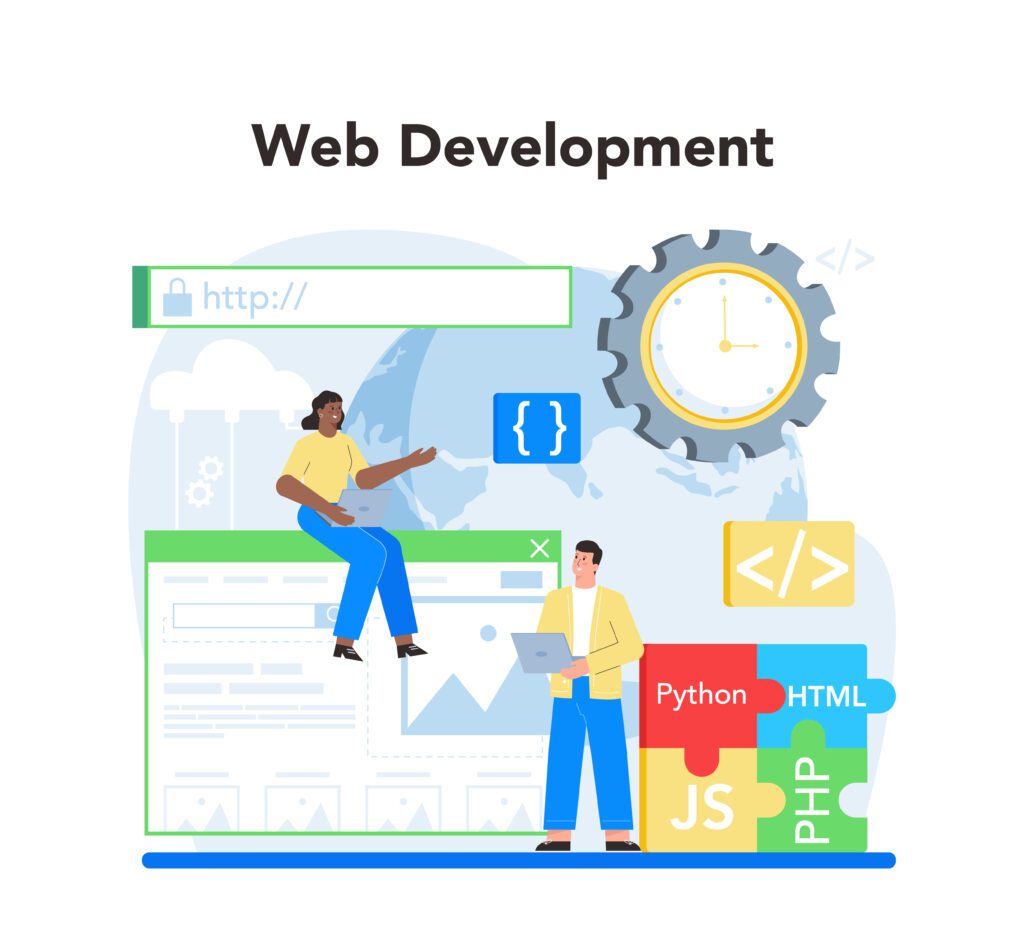
In today’s digital age, websites and web applications are crucial elements of a successful business strategy. Python, with its simplicity and versatility, has become one of the most popular programming languages for web development. From startups to large enterprises, businesses rely on Python web development for creating dynamic, high-performance websites. However, building web applications efficiently is just the beginning—optimizing their performance is vital for maintaining a competitive edge.
In this blog, we will explore strategies to optimize performance in Python web development and how leveraging the right tools and techniques can ensure faster load times, higher efficiency, and a superior user experience. We will also touch upon the importance of working with a reputable web development agency and why performance matters for both small-scale websites and large-scale web application development.
What Makes Python Ideal for Web Development?
Python web development is favored because of its readability, large community, and extensive libraries. Frameworks such as Django and Flask simplify web development, making it easier for developers to build robust web applications in less time. Python’s ability to handle complex data processing while maintaining code simplicity makes it an excellent choice for both back-end and full-stack development.
But while Python is an incredible tool for web development, performance optimization plays a key role in ensuring that the websites and web applications you create are scalable and efficient.
1. Efficient Code Writing: The Foundation of Performance Optimization
When it comes to optimizing performance in Python web development, the first step is efficient code writing. This means focusing on clean, modular, and reusable code. Poorly structured or redundant code can significantly slow down your web application and impact user experience.
- Use Python’s Built-in Functions: Python comes with powerful built-in functions that are optimized for speed. Wherever possible, use Python’s native libraries and functions rather than writing custom solutions from scratch.
- Adopt Asynchronous Programming: Asynchronous programming allows multiple tasks to be executed in parallel, improving the performance of web applications, especially those dealing with I/O-bound tasks like file operations or database queries.
- Code Profiling and Optimization: Using profiling tools like Py-Spy and cProfile helps identify bottlenecks in your code. Once you know which areas of your code are slow, you can optimize them using more efficient algorithms or data structures.

2. Leveraging Caching for Speed
Caching is one of the most effective ways to boost performance in Python web development. It helps store frequently accessed data in a cache (temporary storage), so subsequent requests for the same data are served from the cache rather than querying the database or processing the request from scratch.
- Database Caching: Caching database queries can reduce the load on your database server and speed up your web application’s response time. Libraries like Memcached and Redis are excellent tools for caching in Python.
- View Caching in Django: In the Django framework, view caching allows you to cache the entire response for a specific view. By caching views, you can significantly reduce the time it takes to render pages that are accessed frequently.
- Static File Caching: Ensuring static assets such as images, CSS, and JavaScript files are cached on the client-side can also improve page load times and overall performance.
3. Optimizing Database Queries
Database performance is often a major bottleneck in web application development. Optimizing database queries can result in faster data retrieval and reduce the load on your application.
- Optimize Query Performance: Make sure your queries are as efficient as possible. Avoid retrieving more data than necessary, and leverage indexing to speed up queries.
- Use Lazy Loading: With lazy loading, you only load related data when it is actually needed, rather than loading it all at once. This can save time and resources, particularly when dealing with large datasets.
- Database Connection Pooling: Connection pooling allows the reuse of database connections, reducing the overhead associated with establishing new connections for each request. This results in improved database performance.
4. Content Delivery Networks (CDNs)
Another great method for optimizing performance in Python web development is by using Content Delivery Networks (CDNs). CDNs are networks of servers that are distributed across various geographical locations. They cache and serve content from the server that is closest to the user, reducing latency and improving load times.
- Offload Static Content to CDNs: By serving static files such as CSS, JavaScript, and media files via a CDN, you reduce the load on your web server and ensure faster delivery of content to users worldwide.
- Global Reach: For global businesses, CDNs ensure that your content is accessible quickly from anywhere in the world, improving user experience regardless of geographical location.
5. Compressing Assets for Faster Load Times
Web development services are not just about writing clean code—they also involve optimizing the assets that make up your website. Large files, images, and scripts can significantly slow down your site. Compressing these assets ensures that they load faster, improving both performance and user experience.
- Minification: Minifying CSS, JavaScript, and HTML files by removing unnecessary characters (such as white spaces and comments) reduces the file size and speeds up page loading times.
- Image Optimization: Optimizing images for the web by using appropriate formats (like WebP or optimized PNG) and reducing their file sizes can drastically improve load times without compromising quality.
- GZIP Compression: GZIP is a widely-used method of compressing files before they are sent to the user’s browser, resulting in smaller file sizes and faster transfer speeds.
6. Load Balancing and Scalability
For large-scale web application development, load balancing and scalability are key factors in performance optimization. Python web development allows for efficient horizontal scaling, which involves adding more machines to handle increased traffic.
- Load Balancers: Implementing a load balancer distributes traffic across multiple servers, preventing any single server from becoming overwhelmed with requests.
- Horizontal Scaling: Python applications can be easily scaled horizontally by adding more instances of the app to handle traffic spikes, ensuring that your web development services can meet increasing user demand without performance degradation.
- Auto-Scaling: Using cloud-based services like AWS, auto-scaling can automatically adjust the number of servers handling your web application based on current traffic loads.
7. Optimizing Middleware and Frameworks
Middleware is an essential part of web frameworks like Django and Flask, handling tasks such as request/response processing, authentication, and more. However, inefficient middleware can add unnecessary delays to your application.
- Choose Lightweight Frameworks: Frameworks like Flask are lightweight and give you greater control over what middleware to include. By choosing only the essential middleware, you can reduce overhead and improve performance.
- Optimize Django Middleware: In Django, review and optimize the middleware you are using. Disable any middleware that is not required for your application’s functionality.
Conclusion
Python web development provides immense flexibility and power, enabling developers to build everything from simple websites to complex web applications. However, to ensure a smooth and fast user experience, performance optimization is essential. By focusing on writing efficient code, leveraging caching, optimizing database queries, and using modern tools like CDNs, Python developers can enhance the performance of their web applications.


